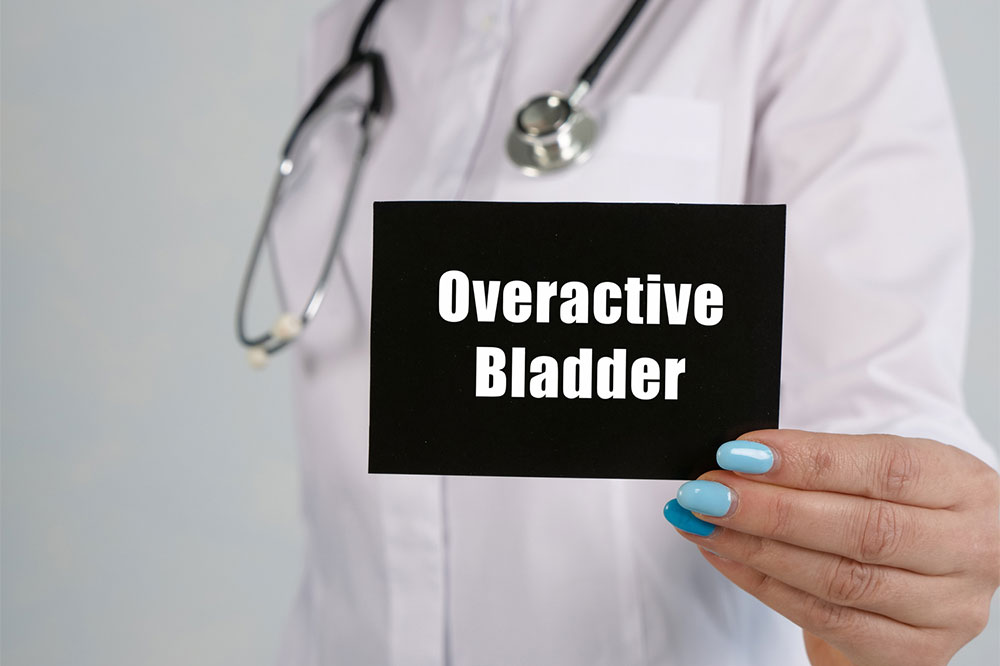
Top overactive bladder signs and symptoms
An overactive bladder or OAB causes a sudden and frequent urge to pee, often hard to control. You may constantly feel the urge to pass urine multiple times during the day or might also experience urgency incontinence or unintentional urine loss. Sadly, you are likely to feel pretty embarrassed in a social setting if you deal with an overactive bladder. This might make you want to isolate yourself or curtail your social and work life.
However, following an evaluation, you can determine any particular cause for the OAB symptoms. Fortunately for you, OAB symptoms can be tackled with simple behavioral strategies, such as employing bladder-holding techniques with pelvic floor muscles, timed voiding, and dietary changes. However, when these efforts are not helpful enough, you may require additional treatments.
1. Overactive bladder signs
In our body, urine is stored in the bladder. When the bladder is full, nerves will indicate the muscles enveloping the bladder to release urine. Simultaneously, the other nerves will trigger the urethra, the tube from the bladder, to push open. Hence, urine can release from the body. But, at times, nerve signals tend to go haywire, triggering the body to pee, even when the bladder is not full. This is referred to as an overactive bladder syndrome. But, what are the overactive bladder signs? Let us find out.
2. Frequent urination
One of the most common overactive bladder signs is frequent urination. It implies that when you suffer from OAB, you will have to visit the bathroom a couple of times in the day. Typically, how many times you visit the loo may be different for different people. However, experts believe that people who go to the bathroom over eight times in 24 hours urinate frequently.
3. Nocturia
It is when you are forced to wake up to pee at least twice in the night.
4. Bladder spasms
All of this is routine. Typically, your bladder will fill up with urine, and you will be made aware of that as you feel the need to pee. When you get this feeling, you will start looking for a bathroom in your vicinity.
On the other hand, in people with bladder spasms or detrusor contraction, the urge to pee is sudden and usually severe. Spasm, in itself, is an involuntary and sudden muscle squeezing. So, it happens when the muscles squeeze rapidly, sans any warning, triggering an urgent need to pee. With bladder spasm, urine is pushed from the bladder, resulting in leakage. It is known as urge incontinence. Those who experience bladder spasms regard it as a cramping pain or a burning sensation. Some women with severe bladder spasms equate the muscle contractions in spasms to painful menstrual cramps or even the labor pains experienced in childbirth. However, occasional urine incontinence might not always be an overactive bladder sign. You can experience urine leakage for several different reasons, such as laughing too hard. At times, loss of urine might be experienced when you are combating the urge to pee for an extended time.
5. Urgency
Urgency implies the sudden and urgent need to pee. In this case, you may be unable to put off this instant urge to rush to the loo. It is also known as latch key urgency, wherein you feel the need to empty your bladder as soon as you get home or put the key in the door.
6. Polyuria
Polyuria is a combination of two words – poly, meaning multiple, and uria, meaning urination. It is also interchangeably used with urinary frequency, but it majorly describes the urine volume 24 hours, at night, or during the day. When you have night polyuria, it is known as nocturnal polyuria, whereas when you have day polyuria, it is known as diurnal polyuria. The primary diagnostic measure for polyuria is global polyuria or excessive urine output in 24 hours. When you urinate more than usual, it can result in adverse symptoms, such as excessive thirst or dehydration. Overall, it is one OAB feature, which can be quantitatively measured.




